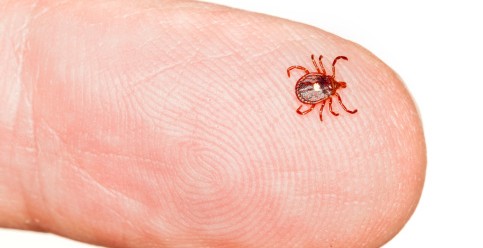The Lone Star Tick in Florida
Amblyomma Americanum, also known as the Lone Star tick, has been identified throughout the southeastern U.S. including central Florida. In fact, this is the most common human biting tick in Florida (Clark KL, Leydet B, Hartman S. International Journal of Medical Sciences 2013). The ticks are commonly found in wooded and animal resting areas.
The Heartland Virus, also known as Severe Fever with Thrombocytopenia Syndrome Virus (SFTSV), was first discovered in the U.S., in northwestern Missouri, in June 2009. The virus results from a tick-borne illness from the Phlebovirus genus. The U.S. Center for Disease Control and Prevention (CDC) has traced the virus to the Lone Star Tick. Current investigations are looking at whether the virus can be transmitted by other vectors including mosquitos and flies.
Most of the cases of the Heartland virus identified so far occurred between 2012 and 2014 and have included two deaths. All patients who became ill had been bitten by a ticks within the previous 14 days between May and September. Reported symptoms included fever in excess of 100.4 F, headaches, lethargy, and diarrhea, loss of appetite, nausea, and joint pains. Additionally, low white blood cell counts and low platelets (thrombocytopenia) also were seen in these cases. The diagnosis was made after exclusion of other causes of infectious disease and also through antibody titers.
At present, there is no specific treatment for the Heartland virus. Antibiotics are not effect against the virus. Supportive care to include IV fluids and analgesics are recommended. Recommendations for prevention includes the use of appropriate clothing such as long sleeve shirts and pants. The use of insect repellents including ones that contain DEET are recommended, however, this is not always effective.
Interestingly, it has been reported that a bite from a Lone Star tick can trigger an immune system response leading to a meat allergy. Dr. Scott Commins and Dr. Thomas Platts-Mills from the University of Virginia, identified the Lone Star tick as the culprit to causing this unusual allergy in 2011 (Current Allergy and Asthma Reports Feb 2013 13(1): 72-77). The number of cases have continued to be seen with increasing frequency. As many of the reactions are often delayed, making the correct diagnosis has been challenging. It is unknown why only some develop the meat allergy.
Some have experienced long term symptoms associated with the Heartland virus from Lone Star tick bites. It is unknown if the development of a meat allergy from this same tick species is a permanent one.

